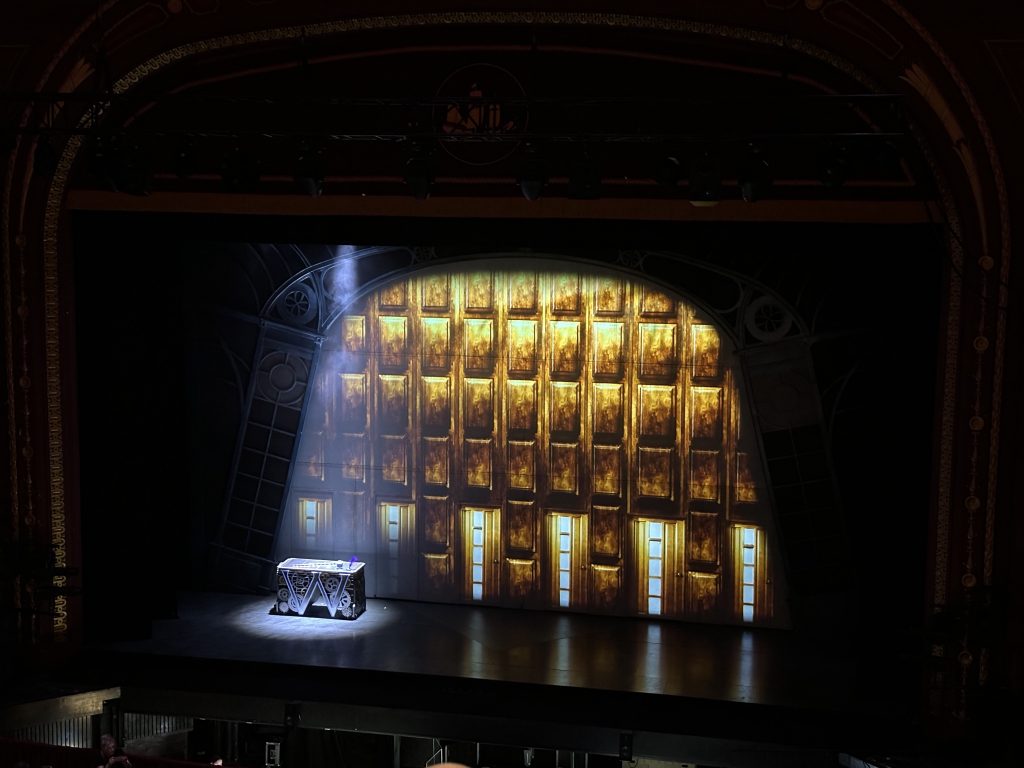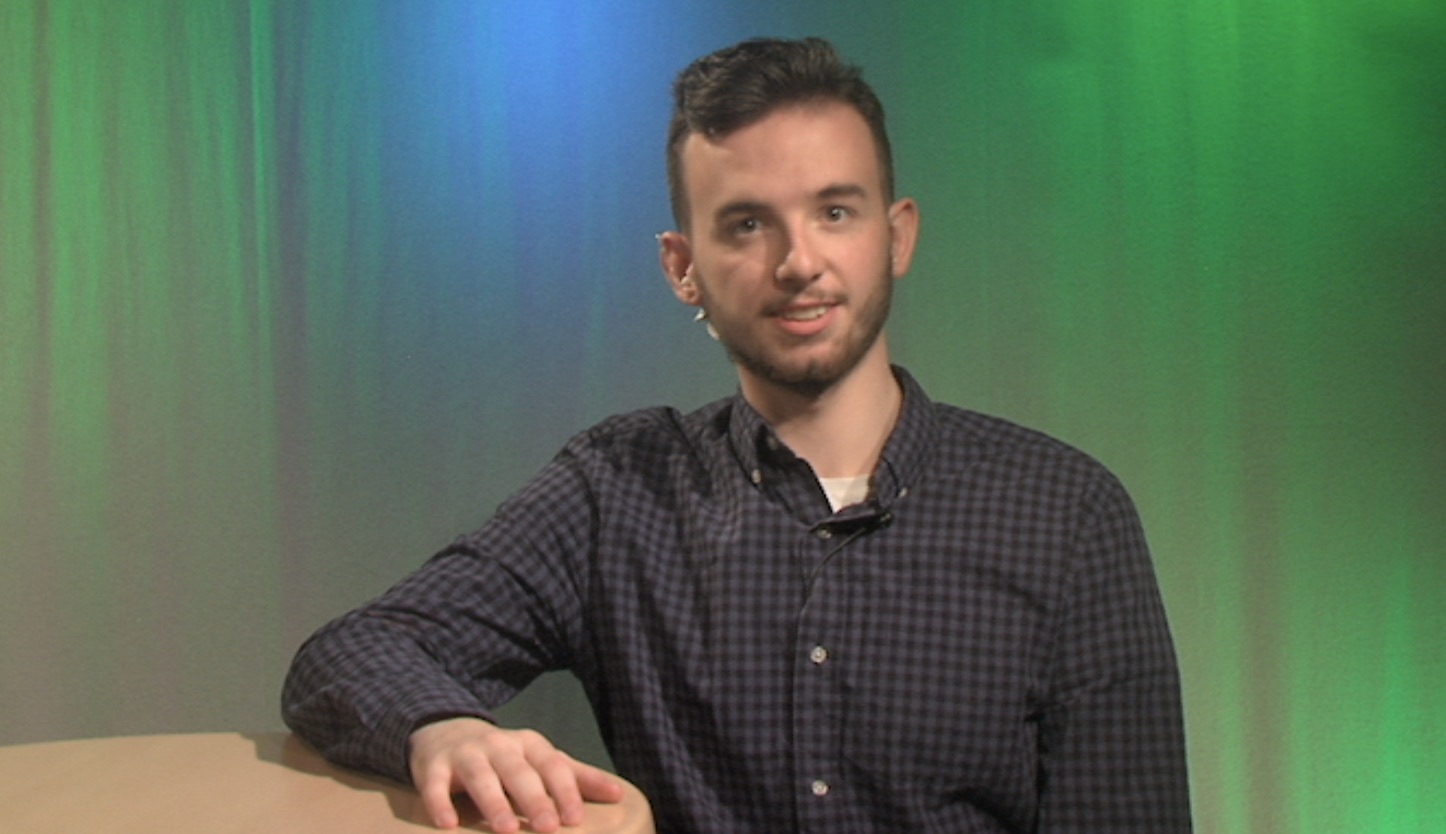Culture
REVIEW: Charlie and the Chocolate Factory – The Musical at the Mayflower Theatre

Tonight, Willy Wonka welcomed the chocolate factory into his Southampton. Wait, scratch that – now reverse it. Roald Dahl’s ‘Charlie and the Chocolate Factory’ is a story that we all know and love very well. Whether that be from the book itself, Gene Wilder or Johnny Depp’s interpretations, or even the anticipation for Timothée Chalamet’s ‘Wonka!’ – it’s a family favourite! The same story has been told in a number of different ways and you can now relive that magic through song and dance once again. David Greig’s stage adaptation started on London’s West-End in 2013 before making its way to Broadway in 2017 and back to the UK and Ireland in 2023 for its first ever tour. Stage adaptation of books aren’t everybody’s cup of tea, especially when they are as well known as this. So how do you bring such a monumental piece of art to life in a different and exciting way without ruining the story? Theatre magic!
This isn’t your average ‘story-book’ telling of ‘Charlie’, (what I’ll be referencing the musical as from now on), but a new and inventive twist on the same characters and world we’re so familiar with now. I won’t bore you with a synopsis of the general narrative of the show but it features everything you’d expect it to from chocolate, to glass elevators, to lots more chocolate. One thing that was particularly impressive throughout the show was the choreography between set movement, the actors on stage, and the interaction with the set and lighting. Director, James Brining, has clearly worked extremely closely with each and every member of the company to ensure that the ‘theatre magic’ is as immersive and extraordinary as possible. As he said, “we could all do with some joyful escapism and what better way to do that than to be transported away to Roald Dahl’s magical world of hope and dreams”.
When it comes to the cast, everybody put 100% into what they were doing and it really shows. A lot of the cast had double roles so were always switching up between scenes and despite the show pretty much being the story of 5 different children, there was actually only 1 child in the cast and that was Charlie. The actors that did play the other 4 children did their jobs brilliantly. After the first couple of minutes I had forgotten that they were adults acting as children, job well done! I think it’s pretty obvious but Gareth Snook who played the role of ‘Willy Wonka’ was just fantastic. He was the perfect mix of Wilder and Depp whilst still being his own character at the same time. Adding in his singing and comedic monologues – Brilliant! Michael D’Cruze who played the role of ‘Grandpa Joe’, was also a stand out performer. His character helped in bringing the audience into the correct tone or feeling for each particular scene, as if we were living through how he was reacting on stage. Fantastic work! But of course we can’t forgot the role of ‘Charlie Bucket’ who was played by the incredibly talented Harmony Raine-Riley. Harmony was brilliant from the first moment she stepped onto the stage. The whole audience was captivated by every word she was saying/singing and at such a young age to take control of an audience that size… Bravo!

I’d also like to give a special shout-out to Leonie Spilsbury who played the roles of ‘Mrs Bucket/Mrs Teavee’. Whenever she was playing Mrs Bucket – whilst talking and singing, she was also signing using Makaton sign language. Lots of other characters in the ‘Bucket Household’ were also using Makaton when speaking but Spilsbury was signing nearly the whole time and doing so really well. It’s very refreshing to see actors signing being incorporated into the story line and it was a fantastic idea to do so. Really amazing work!
For me what really made this show was the set, lighting and illusions. This is what the ‘theatre magic’ was all about. Simon Higlett (set & costume designer) and Tim Mitchell (lighting designer) have hit the nail on the head when it comes to bringing the magic to life! There were so many different set changes with big intricate movements that literally brought the chocolate factory to life. This mixed with the scarily impressive lighting and video partnership (Simon Wainwright, video designer), meant that actors interactions with set were extremely simple but had such a huge impact on the audience. There were multiple times that the audience could be heard audibly gasping at the sites they were seeing. These gasps would have also been a big thanks to Chris Fisher (illusions), who again bought the magic to life right in front of our eyes with practical illusions on both minor and major scales. My only wish was that they’d gone bigger with some of their illusions to ensure that they don’t get undermined or lost. Other than that, flawless!
You of course can’t have a musical without the music. As well as including the original 1970’s motion picture classics of ‘The Candy Man’ and ‘Pure Imagination’, there is a whole new set of original songs from Marc Shaiman and Scott Wittman. Personally I thought the music was the correct accompaniment to the story and Musical Supervisor and Director (David Shrubsole and Ellen Campbell), managed to hit every beat perfectly – excuse the pun. They really helped to control the mood of the show and portray the emotion of the characters onto the audience. With Shaiman and Wittman having also written the music for the Tony and Grammy award winning musical ‘Hairspray’, it’s no wonder the music was so good – we can ‘choc’ it up to experience…
But with all joking aside, this is the perfect soundtrack for the story and with a live orchestra, its even better!
Act 1 of the musical took us through the back story of the characters and finding each of the golden tickets. Although there is actually quite a lot to go through there, it just seemed as if not a lot really happened. The story felt quite slow paced and like we weren’t moving anywhere with any purpose very quickly. Granted, the majority of the first act does take place in the Bucket’s home so there isn’t much movement – but for me unfortunately it just fell a bit flat on the pace side of things. Act 2 ramped up considerably in pace and took us through the tour of the factory and losing each child. This was actually done very cleverly and everything I previously mentioned above all came together to make this possible. Without giving too much away, act 2 is also where we met the infamous ‘Oompa-Loompas’, but these weren’t little orange people with green hair – they were instead kind of terrifying. All I could think was Tim Burton meets the Tin-man (if you know you know). They certainly put their own spin on it and it was certainly a surprise, I’m just unsure if it was a welcomed one yet.
Despite this ‘Charlie’ managed to balance a story for children and adults alike flawlessly, creating a timeless classic that the whole family can enjoy. The magic of Roald Dahl’s mind was developing in real time right in front of our eyes through all of our senses. From the moment you walk into the theatre they pump a chocolate scent through the air and continue to do so for the duration of the show. It’s just a lovely added touch. I remember turning around in the interval and wishing I had some dark chocolate. Superb attention to detail. ‘Charlie’ has it’s tongue-in-cheek moments, as well as it’s darker moments which go hand in hand brilliantly, getting laughs and smiles from both adults and children. This is such an uplifting, inspiring, and feel-good musical that ironically leaves you not really having to use your imagination. The show is currently on it’s UK & Ireland tour and if it’s coming to a theatre near you it’s definitely worth a watch; just remember your chocolate! As the tour continues I wish the whole cast and company all the success and luck going forward.
Culture
Where confidence takes centre stage: How theatre transforms

Performing arts education isn’t just about learning to act, dance, or sing – it’s vital in developing many young people’s confidence and self-expression.
In a digital age where young people are spending more time on their devices than ever before, theatre education provides lifelong skills like communication, resilience and teamwork.
I caught up with some of the students at Artisan Theatre School, a Hampshire based youth theatre club, to see if this rings true.
Ben, 18, said his time at theatre school has “helped develop people skills” and made him “a more confident person”.
He urged other young people to “get involved and enjoy it!”
Daniel, 17, shared a similar sentiment saying his “confidence has grown a lot”.
Theatre education can open a whole world of new opportunities for young people, giving them the space to discover their talents and explore future career paths.
Lucy, 17, has attended Artisan Theatre School for nine years and said: “I want to be a performer in some capacity.”
She added: “That’s my dream because of Artisan.”
Emma, a singing teacher at the school, said performing arts education is “beneficial to anyone,” not just those pursuing it professionally.
She added it can be especially valuable for children with SEN, helping them build confidence, improve communication, and “come out of their shell” in a supportive environment.
Unfortunately, despite its benefits, arts education is not guaranteed for every young person.
Cuts to funding over the last decade has had a significant impact, limiting access to creative learning opportunities.
The Cultural Learning Alliance’s 2025 report reveals a 42% decrease in Creative Arts based GCSE entries since 2010, and a 27% decline in the number of Arts teachers.
Sam Blackwell, principal and founder of Artisan Theatre School, said arts education is “really important” and that “they don’t do enough of it in schools”.
She explained that her vision in creating the school was to “give back more to kids and get them being confident”.
To help fill the gaps left by reduced arts provision in schools, Sam plans to introduce additional classes and offer increased opportunities for her students to learn from industry professionals.
Culture
And we all keep dancing for it can’t get any worse (90s/00s)

The Shakespearean nature of Tony Blair’s time as Prime Minister is something that had never been seen and his obsession with “the spin” that had won him the 1997 election and made him one of the most popular prime ministers when entering office.
With large proportions of the public optimistic for his premiership incoming.
A fall from grace would ensue much like Macbeth.
It would be cruel and untrue to reflect on Tony Blair’s premiership to say that it was a complete failure, especially as many still see him as one of the best PMs the UK has ever had.
Since one of the biggest landslides in UK election history in 1997, he was able to push through many socialist policies without much of a hassle: inflation was low, crime was down by a third, children were achieving some of their highest results ever in school, thousands more students were going to university, a million pensioners and three million children had been taken out of poverty, the quality of the air, beaches, and drinking water was as clean as before the industrial revolution.
However 9/11 changed everything. The era of youthful optimism and rebellion has been replaced by what a lot of thinkers call post-post modernism.
At site Zero, George Bush claimed that “those who are responsible must be brought to justice.”
He outlined Cuba, Iran, Libya, Syria, North Korea and most importantly Iraq.
Once the troops stepped into Iraq, it was the start of a domino effect that quickly decimated Blair’s time as PM.
Unlike Kosovo and Sierra Leone, Britain’s involvement in Iraq did not have the public’s support.
In his book The Prime Ministers, Steve Richards remarks that Tony Blair had not assumed any cabinet position in the lead up to his premiership and asks:”What if Blair had been foreign secretary? at least he would’ve seen, and interpreted intelligence – an explosively contentious issue in the run-up to the Iraq War.”
And then, the day after London had been announced as the host of the 2012 Olympics, on the 6th of July 2005, 7/7 happened.
Four terrorists detonated bombs on public transport – 52 killed and 784 were injured.
When times get tougher and life gets sadder, what do people do? Dance to forget
Prince William and Kate were leaving a Chelsea nightclub at 3am, Prince Harry was partying with Kanye West and getting into a scuffle with photographers at 4am.
The 2000s club scene was here and everyone was taking part; it was loud, it was abrasive, and it was here to stay.
Since the introduction of the stifling 1994 Criminal Justice Act, which is considered to have brought the illegal rave era largely to a close, “free parties” were the new get-around of the law: Student clubs offering “buy one, get three free” on alcopops and 50p doubles for an hour.
Halls bars were £1.20 a pint. Artists like LCD Soundsystem, Missy Elliot and Rihanna began their rise to fame with dirty, booming soundscapes that captured the drug-fuelled atmosphere of clubs as everyone dances to a beat that never seems to end, drenched in sweat.
Films like Trainspotting capture the allure of 2000s clubbing but the grim reality, drugs have found their way into the club scene.
Much like the Oasis album Standing on the Shoulder of Giants is described as Oasis’ “come down album”, the 2000s was a comedown era of clubbing.
The times were sad, but the music got louder?
As David Cameron’s government entered Number 10 Downing Street in 2010 and ushered in 14 years of austerity, where exactly would clubbing culture go with almost all clubs closing….
Culture
REVIEW: Sigrid – There’s Always More That I Could Say

2 out of 5 stars
A disappointing third album filled with negativity
In all honesty, I was late to Sigrid’s party.
I started following the Norwegian pop star in 2023 when she had already released two albums and completed a slew of EPs and international tours.
In no time at all, I was captivated by her rasping tones, funky rhythms, and cool electronic synths.
When news broke that her third album would be releasing on 24 October, it was no surprise to find myself listening and assessing it…
Jellyfish is the first single and the most lighthearted. I like it.
It’s a nice story about two people meeting at a dance and kindling a relationship.
Sigrid sings in a syncopated rhythm, giving a jazzy tone to the tune.
For the first time in her career, she includes a flute.
Cold, gritty, grim
It plays a flourish at the beginning but I can’t hear it throughout the rest of the track. It would be good to hear more of the flute in future.
Fort Knox is single number two. As the name suggests, this is a cold, gritty, grim song about a woman betrayed by her man.
This betrayal cuts so deep that she has retreated into her shell to “lock my love up in… Fort Knox”.
I enjoyed the dramatic, dark nature here, especially the war cry chorus throughout the song.
Towards the end, you would think the song has finished before it plays one more crescendo of strings to cap things off. I thought that was unnecessary.
The third single, Two Years, is written from the perspective of the woman’s boyfriend, another new departure for Sigrid.
He has been chasing for that exact period of time. It’s a cheery song with a strong beat, despite the desperate lyrics like: “What are you running from? / Why did you let me go?”
I’ll Always Be Your Girl is another sad song of frustration and heartache caused by a rowdy, hot-headed partner.
It is sung very well, especially the pleading chorus line, and the drum-guitar combination gives me something to nod along to.
Unconventional energy
Do It Again is the most unremarkable song on the album.
There is a good guitar and drum track, however the story again is quite predictable for Sigrid (being tempted to rekindle on old flame relationship).
Kiss The Sky returns to more unconventional energy which is great.
A lovely fade into the track leads into the main verses.
This time, Sigrid is speaking her verses with a distorted effect rather than singing them. It sounds good and complements her natural raspiness.
A strong guitar riff carries us through the bridge. The electronic synths make this seem like a 1980s dance track.
It’s only the lyrics that make this song a story of disappointment between lovers.
There is sexual innuendo in Hush, Baby, Hurry Slowly.
You could interpret it as a man and woman deciding whether to move forward with their relationship.
You could see it as partners deciding whether to have sex or not.
As a result, it’s an interesting song and makes you listen to try and work it out.
The structure shakes things up by starting with the chorus fading in.
The song ends with the melody slowing down and lowering in pitch, reflecting the title in musical terms.
The title track is the obligatory solo piano song.
Sigrid has had at least one piano focused song in all albums.
This is the most beautiful song in the album, featuring solo piano and a nice resonance on the voice.
The lyrics still contain tensions between people, like “giving…my worst” as a girlfriend.
Nevertheless, this is my favourite song from this year’s collection.
The penultimate track is also the longest in the album.
Have You Heard This Song Before picks up the energy from the previous song with a predictable but welcome mix of drums and synths.
The lyrics are pretty hopeful in tone about wanting to spend time with your partner. This is the most positive track on the album.
The last song, Eternal Sunshine, is a conventional finale song.
It has a regular beat and instrumentation.
It is another song built out of frustration with a partner – she wants to “drink” him out of her mind.
It would have been nice to have something different to end on – maybe a different topic.
This is the shortest album Sigrid has released. That is disappointing.
There are 10 songs in only 31 minutes.
I would have expected the usual 12 tracks or more.
The previous albums managed it fine.
Sucker Punch (2019) and How To Let Go (2022) contained 12 songs. The Special Edition of How To Let Go added 15 songs on top of the originals.
This album differs from the last two in that every song but one is constantly loud, energetic, and pumping.
I would have preferred more balance between softer and pounding songs.
How To Let Go had more positivity in it, such as singing in a taxi, body-confidence in the mirror and making the most of life.
This album has replaced that with disappointment and frustration.
It is the album with the most “explicit” songs – never before have we had an album with so much swearing.
I hope that is toned down in future.
Here’s hoping that the next album is more positive, unconventional and creative.
Perhaps that will come out in three years, like the others.
There’s always more that Sigrid could say (sorry, that was a terrible joke).
-

 Football9 years ago
Football9 years agoFootball – Winchester City vs Didcot Town
-

 Community9 years ago
Community9 years agoWinnall community association renovated
-
Community8 years ago
Hampshire’s frontline services at risk
-

 Hampshire8 years ago
Hampshire8 years agoUniversity of Winchester Parking Trouble
-
Community8 years ago
Knight Bus unveiled at school
-

 Community8 years ago
Community8 years ago‘Controversial’ new plans take shape in Eastleigh
-

 Winchester News Online8 years ago
Winchester News Online8 years ago#MiracleMissy Update
-

 Bulletins7 years ago
Bulletins7 years agoWINOL 20 November 2018
